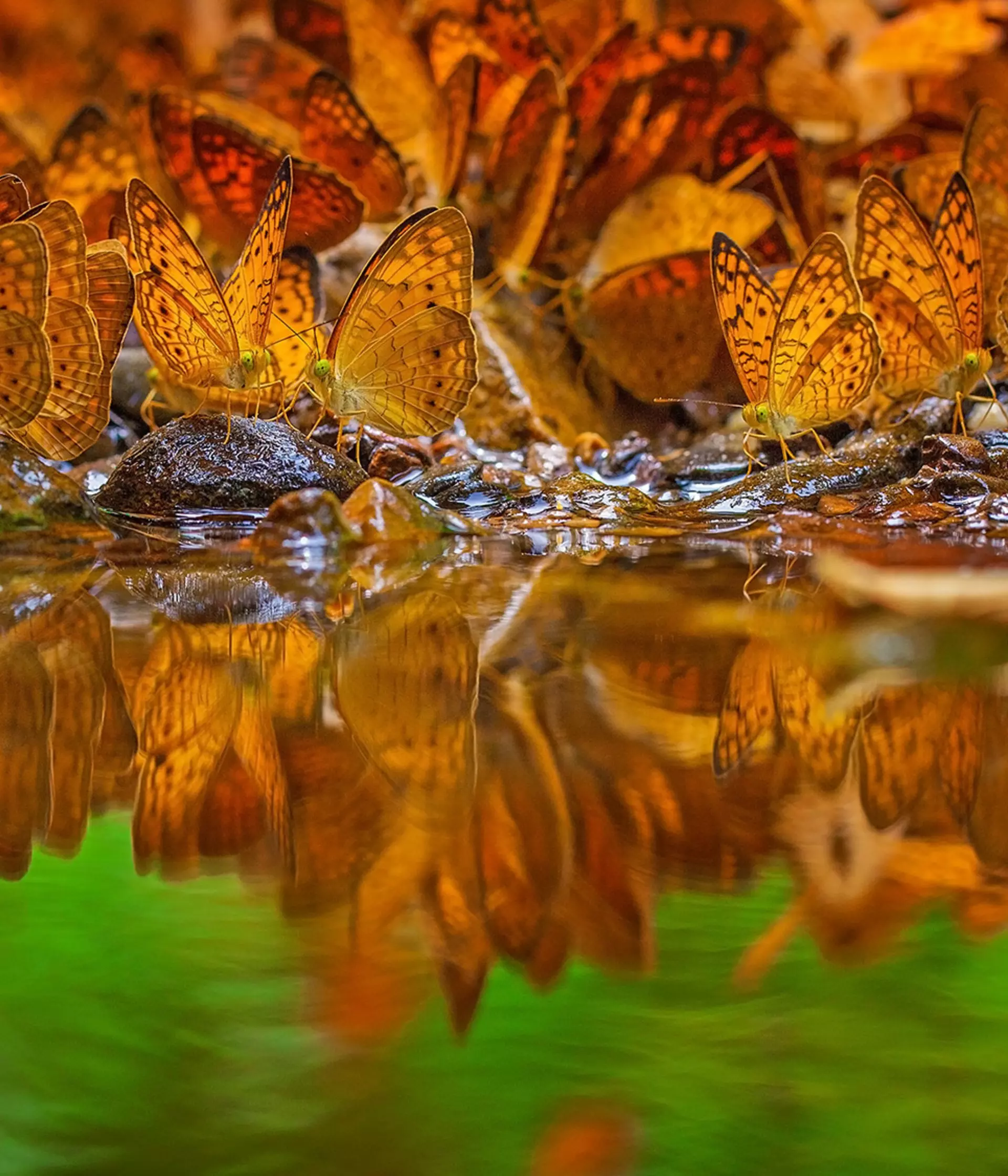There are more than 160,000 species of butterfly around the world, learn more about this iconic insect.
How many legs do butterflies have?
- Butterflies have six jointed legs, a pair of antennae and three body parts called a head, thorax (chest), and abdomen (tail end). The four wings and the six legs of a butterfly are attached to its thorax.
- Special sensors on a butterfly or moths' feet allow the insect to taste their food. Butterflies can not taste through their mouthparts. They also do not have mouthparts that can bite and chew, instead they have a long thin tubular structure that acts like a straw.
How many wings does a butterfly have?
- Butterfly have four wings which are brightly coloured and patterned. Butterfly wings are covered in tiny scales and they are the only insects with scaly wings.
- Each scale on a butterflies wings are a single colour, either red, yellow, black or white. Butterfly colours, including green and blue, are created by light refracting (bending) on the butterfly’s wings.
- The patterns and colours on a butterfly wings are symmetrical and as the butterfly grows older, its wings fade and become ragged.
What do butterflies eat?
- Most butterflies feed on nectar from flowers and many plants rely on butterflies to transfer pollen from one flower to another.
How far can butterflies fly?
- The North American black and orange Monarch Butterfly is the only insect known to be able to fly over 2500 miles. Millions of butterflies migrate south to overwinter and avoid the freezing conditions of the north, but as the plant that the caterpillars feed on, milkweed, does not exist in the overwintering sites, the spring generation fly back north for summer before laying their eggs and dying. The monarch butterfly is also poisonous to eat
Butterfly metamorphosis
Butterflies transform themselves four times in their life. This process is called metamorphosis. A butterfly begins its life as an egg, usually laid on a leaf. A larva (caterpillar) hatches from the egg and feeds on leaves or flowers. The larva will grow bigger and bigger until it is several thousand times its original size before turning into a pupae or chrysalis. Eventually a beautiful, butterfly emerges from the pupae.
Butterfly lifecycle
Butterflies and moths go through several different life stages in their lives. They start life as a small egg attached to a plant - often on the leaf - by glue that was produced from the adult butterfly as it laid an egg. When it is ready, the egg hatches out into a caterpillar, or larvae, which then proceeds to eat as much as possible. It often grows several times its original size and sheds its skin to do just that.
When it is fully gown, the caterpillar will fix itself to somewhere, again often the underside of a leaf or branch, and shed its final skin to reveal a pupae or chrysalis. Moth caterpillars actually spin a cocoon using a leaf, in which the pupae then develops.
Butterfly pupae
- Many pupae avoid being eaten by looking either like a dead leaf, fruit or twig. Pupae are vulnerable to predators such as birds, lizards and snakes, as they can not move or defend themselves. By resembling things found in nature they reduce their chance of being discovered and predated on. Some can even look like bird droppings!
- The Atlas Moth emerges from its pupae without mouthparts, leaving its soul purpose in life to find a mate and reproduce. It has 6 weeks in which to do this, living on the energy it stored as a caterpillar.
You can see all the different life stages of a butterfly at the Zoo in Butterfly Paradise.
Butterfly gardens
Our native butterfly garden at the Zoo supports butterflies and moths in central London, including marbled whites, the white letter hairstreak and holly blue. By planting your own butterfly garden, you can bring get closer to nature and provide new habitat for butterflies. We suggest cutting down on weeding and avoiding pesticides to help the butterflies in your area thrive.
